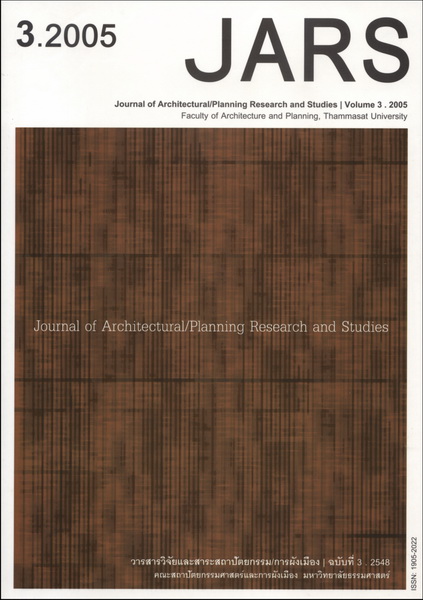A Study of Infrastructure Investment Planning regarding Tourism Development of Sukhothai Historical Park: Alternatives and Socio-Economic Impacts to the Local Communities
Main Article Content
Abstract
Since 1987, the Thai government has recognized and begun adopting a new approach of development
by slowly shifting focus away from a growth orientation approach to a balanced socio-economic development
approach as mentioned in the Eighth National Economic and Social Development Plan (1997-2001) aiming
to improve the well-being of all people in the Thai society.
Though the idea has been limited to development at the regional level at the beginning, the
government has latterly realized an importance of development at the local level with respect to the
potentials, preferences, and functions of the area.
As a case study, this study, therefore, aims to investigate and evaluate socio-economic impacts
potentially created to the local communities with regard to the required additional infrastructure investment
to support tourism development of Sukhothai Historical Park and the associated historical towns by the
two alternatives, i.e. to develop Phitsanulok-the so-called regional-oriented development approach and to
develop Sukhothai-the so-called local-oriented development approach, based on development objectives of
the present development plans and policies using a scientific method.
Downloads
Article Details

This work is licensed under a Creative Commons Attribution-NonCommercial-NoDerivatives 4.0 International License.
All material is licensed under the terms of the Creative Commons Attribution 4.0 International (CC-BY-NC-ND 4.0) License, unless otherwise stated. As such, authors are free to share, copy, and redistribute the material in any medium or format. The authors must give appropriate credit, provide a link to the license, and indicate if changes were made. The authors may do so in any reasonable manner, but not in any way that suggests the licensor endorses you or your use. The authors may not use the material for commercial purposes. If the authors remix, transform, or build upon the material, they may not distribute the modified material, unless permission is obtained from JARS. Final, accepted versions of the paper may be posted on third party repositories, provided appropriate acknowledgement to the original source is clearly noted.

